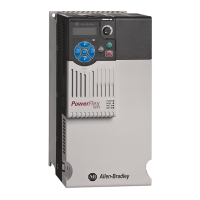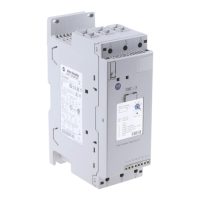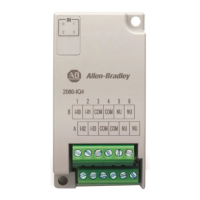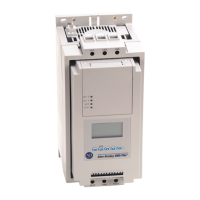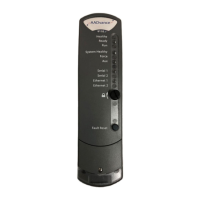Rockwell Automation Publication 750-RM004A-EN-P - April 2018 93
Drive Configuration Chapter 2
The left most one or two digits are the port number, the right most four digits
are the parameter number and, if applicable, the two digits after the decimal
point are the bit number. This port, parameter, bit format is how internal
values of assignable parameter values are handled. Parameter selections or
assignments can be calculated using this formula:
For example, parameter 0:120 [DI M Run] will be assigned to an I/O option
module in port 4 using a run contact that is wired to digital input 1 (port 4,
parameter 1 [Dig In Sts], bit-1). In this example, parameter 0:120 [DI M Run]
would be set = (10000*4 + 1).01 = 40001.01.
IMPORTANT The parameters in Table 52
through Table 58 do not represent an exhaustive
list. Many applications may require modification of other parameters that
are not shown in the following table. Review all parameters to verify that
the new bus supply will operate satisfactorily as a migration solution.
IMPORTANT The parameter comparisons in Table 52
through Table 58 relate similar
parameter functions. However, data type, units, and scaling may be different
between the old and new parameters. This is especially true for DataLink
parameters that are produced/consumed by a Logix controller or PLC. Most
parameters within the PowerFlex 755T product, including DataLinks, are real
type. However, PowerFlex 700S parameters are integer type with scaling
factors applied.
TIP The PowerFlex 700S uses only RPM as velocity units, the PowerFlex 755T can
use either Hz or RPM depending on parameter 0:P46 [Velocity Units]. It is
HIGHLY recommended that PowerFlex 755T parameter 0:46 be set to
1=’RPM’ to match the velocity units that are used by the PowerFlex 700S.
Ensure that applicable parameter units scaling are considered when
designing the PowerFlex 755T migration solution.
Parameter Value 10,000 Port Number Parameter Number + .bit=

